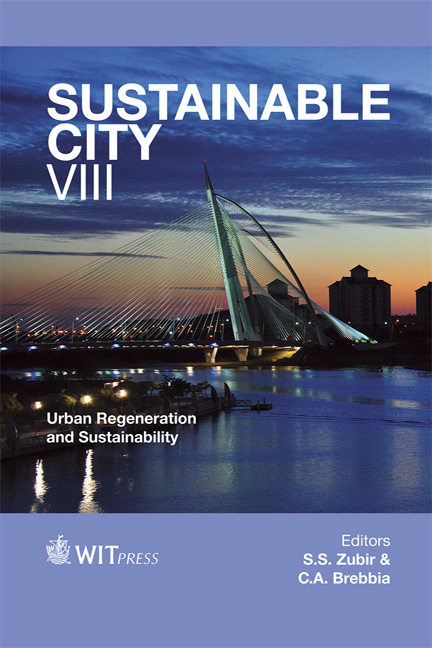Towards Sustainable Latin American Agglomerations
Price
Free (open access)
Transaction
Volume
179
Pages
12
Page Range
605 - 616
Published
2013
Size
974 kb
Paper DOI
10.2495/SC130511
Copyright
WIT Press
Author(s)
I. M. Madaleno
Abstract
The paper presents a comparative study carried out over the course of a decade and a half in ten Latin American cities and metropolitan regions: Lima (Peru), Santiago and Iquique (Chile), Río Cuarto (Argentina), Colonia del Sacramento (Uruguay), Belen and S. Louis (Brazil), Havana (Cuba), San José (Costa Rica) and Mexico City (Mexico). The objectives of the study are twofold: to report successes in natural resources management at a local level as paradoxes of globalisation and to publicise how cultivated front and backyards contribute to build more sustainable urban agglomerations, benefitting both the society and the environment, because traditional healing practices and ethno-botanical knowledge are important legacies for future generations. The sources of data were a sample of one thousand, two hundred and fifty-four inquiries, 70% of which were urban gardeners and periurban farmers. Qualitative research included video records of particular interviewed traditional healers and urban gardeners, sometimes together with their flourishing plots. The investigated plant species have been photographed so as to permit easier dissemination of results to the scientific community and to the general public. Results have confirmed that native species and ancient indigenous prescriptions dominate, with the exceptions of Cuba and Argentina where native ethnic groups have been eradicated, and Uruguay, where the European influence was stronger. Gardening and periurban farming are beneficial for the social, cultural, economic and environmental sustainability of cities and metropolitan regions. Keywords: sustainable Latin American cities, medicinal plants.
Keywords
Keywords: sustainable Latin American cities, medicinal plants.





